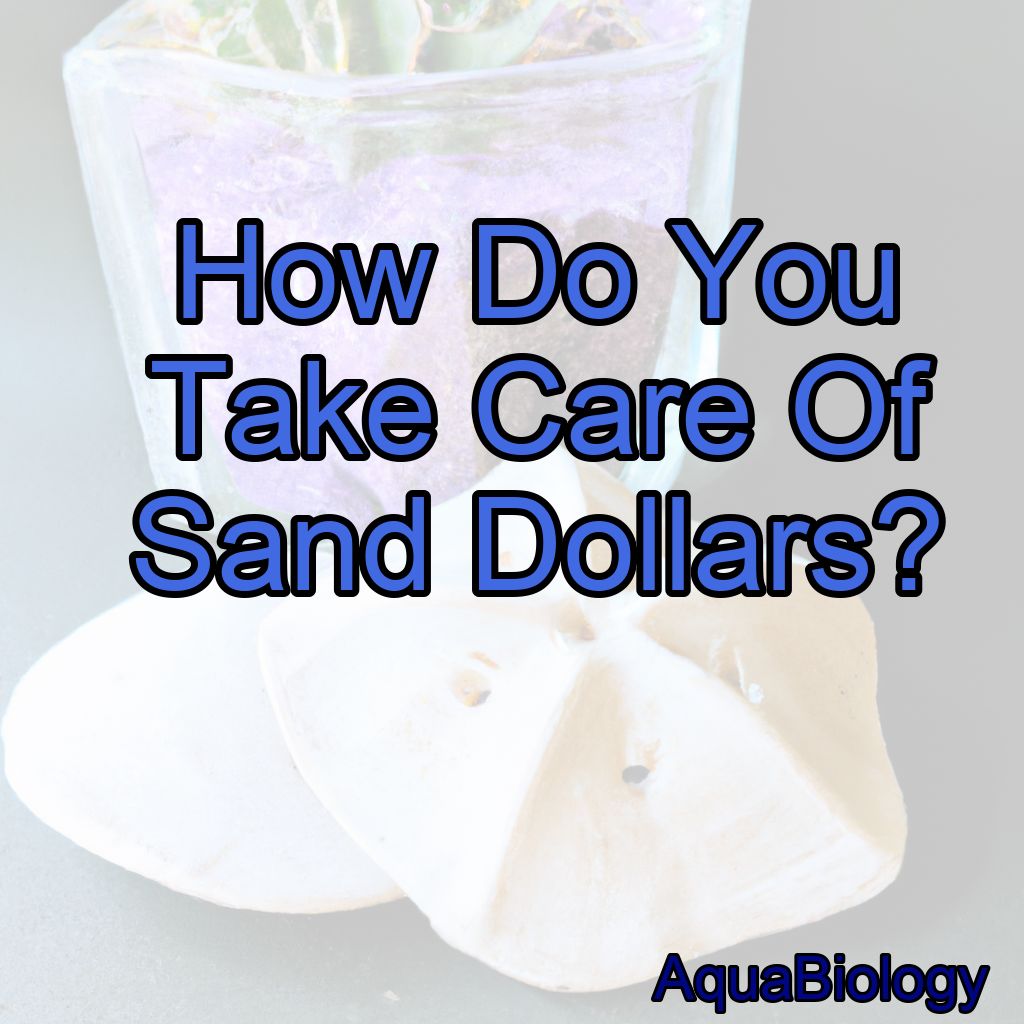As a marine biologist, I have a fascination with all things related to marine life.
Rinse sand dollars in fresh water, soak in a bleach solution, gently scrub, rinse again, and let them dry completely.
One of my personal favorites is the sand dollar.
These fascinating creatures are not only a beautiful sight to behold, but they also play a crucial role in the marine ecosystem.
However, if you are not familiar with how to take care of them properly, you could unintentionally cause harm to these delicate creatures.
In this article, I will discuss the best practices for taking care of sand dollars.
Understanding Sand Dollars
Before we dive into how to take care of sand dollars, it is essential to understand what they are and their role in the marine ecosystem. Sand dollars are a type of echinoderm, which means they are related to sea urchins and starfish.
These creatures are found in sandy seabeds and shallow waters, and they feed on tiny particles of food that they sift from the sand. Sand dollars play an essential role in the ecosystem by filtering the sand and helping to maintain a healthy balance of nutrients in the water.
How to Collect Sand Dollars Ethically
Many people enjoy collecting sand dollars as a souvenir or for decorative purposes.
However, it is crucial to collect them ethically to ensure that you do not harm the ecosystem or the creatures themselves.
When collecting sand dollars, it is best to wait until the creature has died naturally and washes up on the shore.
You should never remove a living sand dollar from the water as this can cause harm or death to the animal.
Cleaning and Drying Sand Dollars
Once you have collected a sand dollar, it is essential to clean and dry it properly to preserve its beauty.
The first step is to rinse the sand dollar in freshwater to remove any sand or debris.
Next, soak the sand dollar in a solution of half water and half bleach for a few minutes to kill any bacteria or organisms that may be on the shell.
After soaking, rinse the sand dollar thoroughly in freshwater and let it dry completely in the sun.
It is essential to let the sand dollar dry completely before handling it to prevent it from breaking or crumbling.
Displaying Sand Dollars

Sand dollars are a beautiful addition to any home decor, but it is essential to handle them with care to avoid damage.
When displaying sand dollars, it is best to use a shadow box or frame to protect them from dust and damage.
You can also use a clear epoxy resin to preserve the sand dollar and give it a glossy finish.
Be sure to handle the sand dollar gently and avoid placing any heavy objects on it.
How to Care for Live Sand Dollars
If you come across a live sand dollar, it is essential to handle it with care and return it to the water as quickly as possible. Live sand dollars are fragile creatures, and even the slightest mishandling can cause harm or death.
If you must handle a live sand dollar, be sure to support it gently and avoid touching the spines or moving it too quickly.
Conclusion
In conclusion, sand dollars are a fascinating and essential part of the marine ecosystem.
To ensure that these delicate creatures are preserved and protected, it is essential to understand how to take care of them properly.
Remember to collect sand dollars ethically, clean and dry them carefully, display them with care, and handle live sand dollars gently.
By following these guidelines, you can help preserve these beautiful creatures for generations to come.
Five Facts about Sand Dollar Care:
1. Sand dollars are echinoderms related to sea urchins and starfish.
2. Collect sand dollars ethically by waiting for them to wash up on shore naturally.
3. Clean and dry sand dollars carefully to preserve their beauty.
4. Display sand dollars in a shadow box or frame to avoid damage.
5. Handle live sand dollars gently and return them to the water as quickly as possible.
FAQs
How long to soak sand dollars in bleach? Sand dollars should be soaked in a solution of 50% bleach and 50% water for no more than 10-15 minutes, or until they turn white.
It is important to rinse them thoroughly with fresh water afterwards and allow them to dry completely before handling.
How do you make a sand dollar turn white?
Sand dollars naturally turn white when they die and their exoskeletons dry out in the sun.
However, if you want to speed up the process, you can soak them in a solution of bleach and water for a few minutes, then rinse them thoroughly with fresh water and let them dry in the sun.
It’s important to use caution when handling bleach and to avoid over-soaking the sand dollars, as this can damage their delicate structures.
What do you coat sand dollars with?
Sand dollars can be coated with a clear sealant such as polyurethane or varnish to help preserve their natural color and texture.
Can you keep a sand dollar as a pet?
No, sand dollars cannot be kept as pets as they are marine animals that require specific living conditions and diets that cannot be replicated in a home aquarium.
Additionally, it is illegal to remove live sand dollars from the beach in many areas.
How do you keep sand dollars from crumbling?
To keep sand dollars from crumbling, it is important to handle them gently and avoid exposing them to excessive heat or moisture.
It is also recommended to soak them in a solution of half water and half bleach for a few minutes, then rinse them thoroughly and let them dry completely before handling them again.
What can I put on sand dollars to harden them?
A mixture of equal parts water and white glue can be brushed onto sand dollars to harden them.




